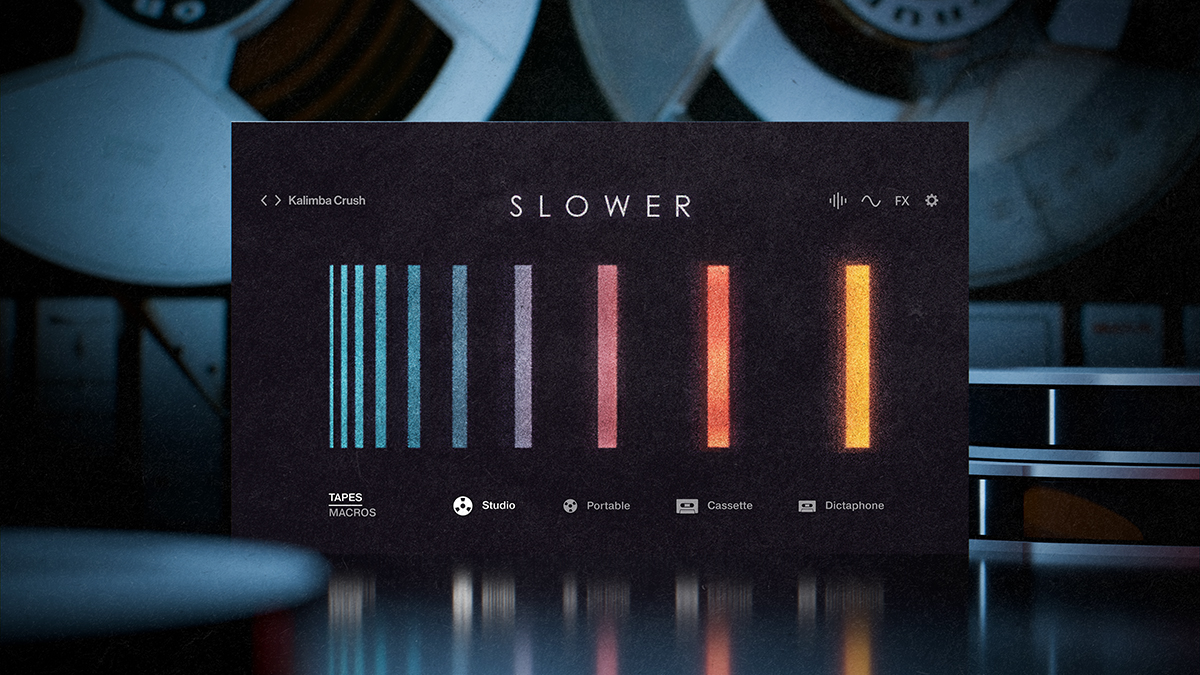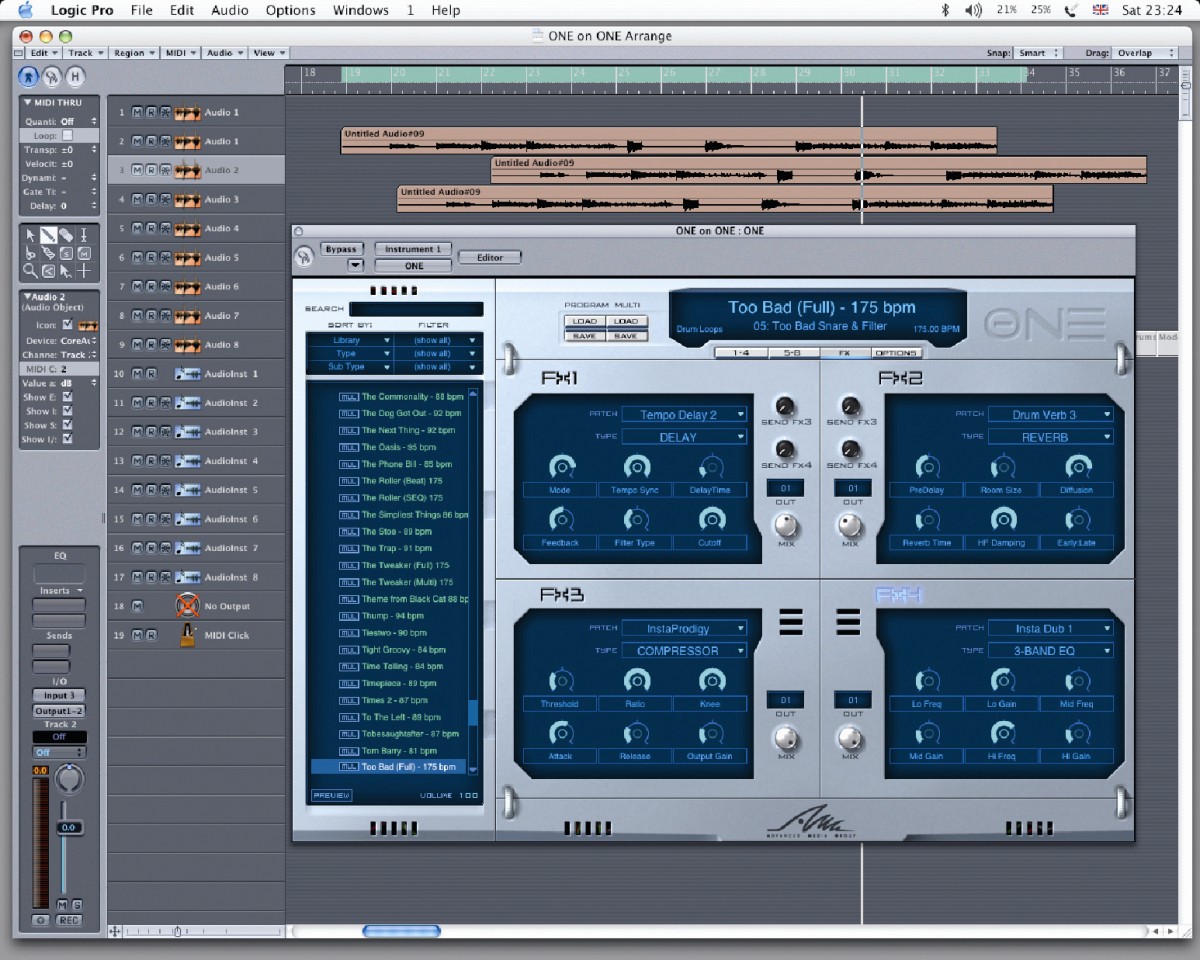MusicRadar Verdict
One could be the creative and stable multi-timbral player you've been looking for.
Pros
- +
Stylish GUI. Over 4.5GB of bundled sounds.
Cons
- -
Library biased towards electronic sounds.
MusicRadar's got your back
After establishing its plug-in credentials with 2007's enjoyable horn-fest, Kick-Ass Brass!, AMG returns with One.
One is a combined groove-activating loop module and sample library that bundles three tools into, er, one: a file player that accepts REX, REX2, ACID, WAV or AIFF files; a waveform slice editor and a 16-step programmable sequencer.
First impressions
Tidily housed within One's stylish interface, each function has its own editing screen and controls. From the eight instrument racks that One offers, you simply click the icon from the top-left-hand corner to pick the one you want.
The rack's current state is indicated by either a MIDI keyboard icon (sample, trigger and filter mode), a waveform icon (slice mode) or a number matrix icon (step sequencer mode).
There's also the small matter of the 4.5GB Core Library (which is encrypted and only authorised for use on one machine). With over 3,500 loops and thousands of individual hits there's more than enough here to keep most groove monkeys off the streets.
There are plenty of usable drum sounds and instrument samples, plus there are the audio-mangling capabilities of One's filters and FX on hand, so the 4.5GB of included content is actually more of a starting point that's limited only by your own imagination.
The only gripe with the sound library is the heavy bias towards electronic drum sounds. AMG say they're planning a range of expansion packs to supplement One's content and that an acoustic collection will be one of the first.
However, this does mean that, out of the box, One is not as well-rounded as it could have been.
In use
One breaks down into three sections: browser window on the left, global controls at the top and the main display area in the centre.
This can be switched to display either racks 1-4, racks 5-8, the FX or the Options screen.
Everything starts with the browser, which displays all the content associated with One. This can be filtered by genre, producer, format, BPM, effect-type etc, so it's easy to assemble a perfect batch of loops on the fly.
Loops can be previewed from the browser, although one shot samples and full-mix multi-files cannot. Double-clicking loads a file into the selected rack. Post-session, your own creations can be saved as either single rack program files or as all-rack-packing multi-files.
When you load your own REX and ACID files, they're stored by default in the My Files folder. This keeps things nice and tidy and facilitates easy browsing, although it also means that if you change your mind about particular loops you might want to periodically clear out and rescan the My Files folder.
Controls
With a file loaded into a rack, it's tweakin' time. A loop or sample can be triggered either by a single specified MIDI note or it can be spread across an octave or two for instant keyboard mapping.
There's no way of triggering a file (apart from individual slices) from within One itself, so a MIDI keyboard is the only option.
All eight racks can be triggered simultaneously by setting each rack to respond to the same MIDI channel and note.
Talking of MIDI, files can be exported for further manipulation and One is also fully MIDI controllable, with a MIDI learn mode that automatically links any control to the next MIDI CC message.
The synth controls are the default selection for each rack, with a three-page system providing access to all the controls, such as One's resonant multimode filter section and envelope ADSR.
Ten different filter types are available and used in conjunction with the cut-off, resonance, mod depth and ADSR controls.
You've got a great deal of creative control over any sample. As with all parameters in One, when you move any knob or slider, a feedback box displays its current settings.
There's also a filter LFO section that offers a choice of waveforms (sawtooth, square, triangle and sine), and LFO rate and depth modulation parameters.
Waveforms
Clicking the keyboard icon takes you to the waveform page, which displays the loop chopped into its component slices. Each one is colour-coded to indicate its current state, such as dark blue for muted or purple for reversed.
Individual slices can be auditioned by clicking and holding, and multiple slices can be simultaneously edited by clicking and holding shift.
The Show Layers option here is pretty cool: this presents a blank row of slices under the currently loaded file, into which new sample data can be pasted (WAV, AIFF or One's OPS single-shot samples). This is an easy way to beef up a pattern or add accents to a groove.
Slices can also be copied and pasted to any position in any rack. There are also one-button shortcuts to swap adjacent slices around if you want to quickly mix up a loop.
Sequencer
The 16-step sequencer is the final page displayed in the rack windows, with individual accent control per step and 32 sound slots for all eight racks.
With a separate instance in every rack you can create multiple pattern variations and trigger them as required or add new beats to existing loops.
Steps are colour-coded to indicate their state, plus there are step swing per cent and accent strength controls. It's limited to 4/4 time unless you get creative with multiple instances of One in your track.
There are no playback controls to demo your pattern; you'll only hear how it sounds when your host sequencer is rolling.
Routing
The final notable aspects of One are its FX and routing features. Four 64-bit FX units are available, with each rack having an auxiliary send for FX units three and four (units one and two are inserts).
There are 16 different FX algorithms in total and the parameter knobs change to display the appropriate parameters for the effect chosen (delay, reverb, phaser, flanger, EQ etc).
Output-wise, One has four separate stereo outputs and each rack's output can be routed to any of them, so it's possible to combine insert and send FX on a rack's loop before routing the combination to a single stereo output.
All FX send controls are post-fader, however, which can't be altered, so the volume of a rack's output affects the overall instrument output.
Conclusion
One is undoubtedly a very useful tool. With a decent library onboard, the promise of future expansion packs, the easy addition of your own collection and creative control over every slice, this plug-in pretty much covers most people's looping needs.
Its integrated, cross-platform, multi-sequencer-friendly approach deserves to win One many friends, and the hidden depths help curb the interface bloat of some of its competitors.
Future Music is the number one magazine for today's producers. Packed with technique and technology we'll help you make great new music. All-access artist interviews, in-depth gear reviews, essential production tutorials and much more. Every marvellous monthly edition features reliable reviews of the latest and greatest hardware and software technology and techniques, unparalleled advice, in-depth interviews, sensational free samples and so much more to improve the experience and outcome of your music-making.

e-instruments’ Slower is the laidback software instrument that could put your music on the fast track to success

“I like guitars that don’t just appeal to metal players”: Jackson and Bring Me The Horizon’s Lee Malia team up for the Pro Series LM-87, a shreddable Surfcaster-style electric with a humbucker/P-90 pairing

“Just so if ever that happens again, I’m like ‘here’s the proof that I wrote it’”: Ed Sheeran reveals that post-copyright cases, he now films every recording session











